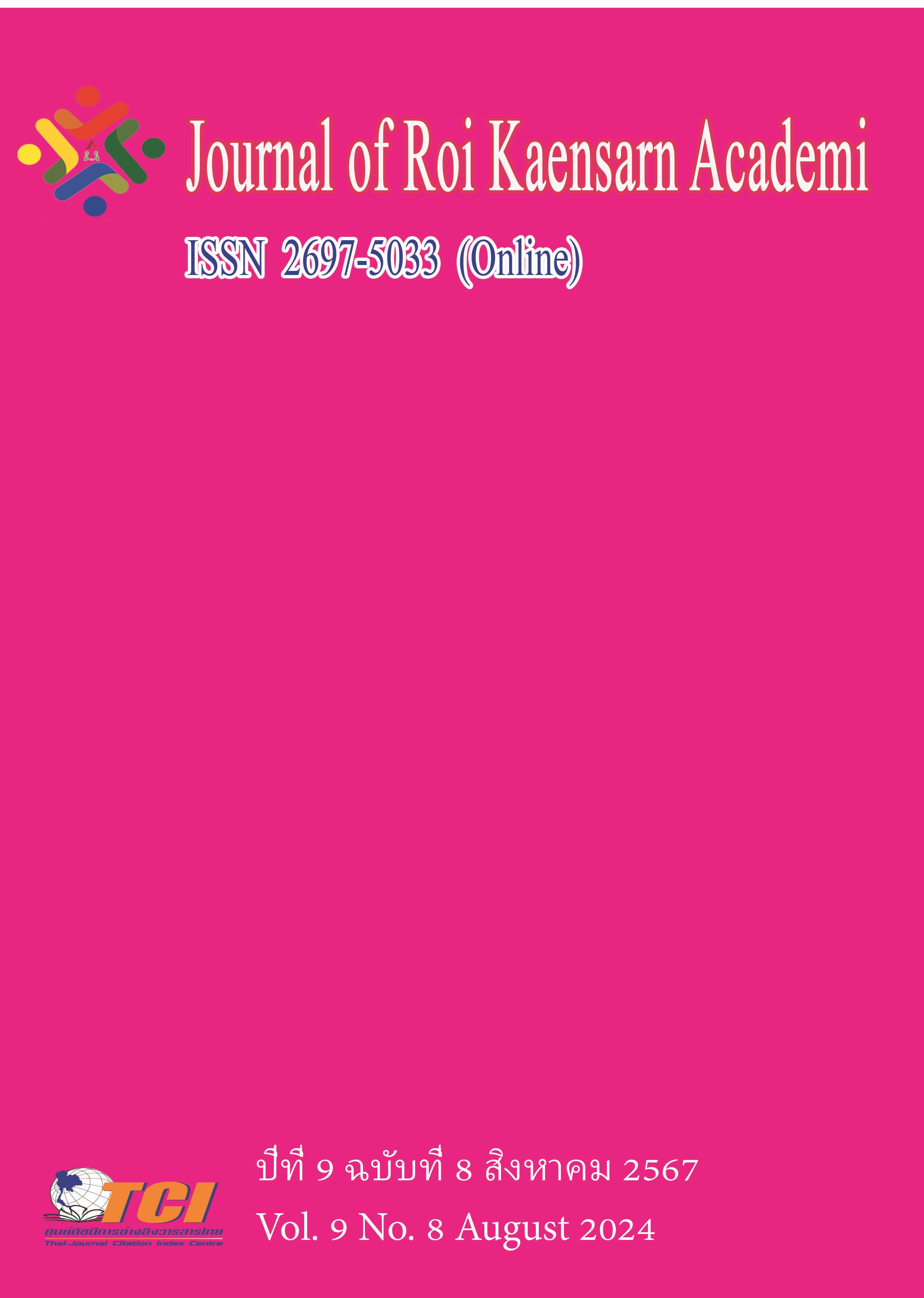การพัฒนารูปแบบการจัดการช่องทางการตลาดส้มโอหลังสถานการณ์ โควิด 19 ของจังหวัดนครปฐม
Main Article Content
บทคัดย่อ
หลังจากสถานการณ์การแพร่ระบาดของเชื้อไวรัสโควิด 19 ส่งผลกระทบต่อยอดขายส้มโอในพื้นที่จังหวัดนครปฐมโดยภาพรวมตกต่ำลง การวิจัยนี้มีวัตถุประสงค์เพื่อ 1) วิเคราะห์สภาพแวดล้อมทางธุรกิจและประเด็นปัญหาของตลาดส้มโอหลังสถานการณ์โควิด19 ของจังหวัดนครปฐม 2) พัฒนารูปแบบการจัดการช่องทางการตลาดส้มโอหลังสถานการณ์โควิด 19 ของจังหวัดนครปฐม กลุ่มตัวอย่างมี 3 กลุ่ม ได้แก่ ตัวแทนเกษตรกรผู้ปลูกส้ม 30 ราย บุคลากรหน่วยงานภาครัฐและเอกชนที่มีบทบาทสนับสนุนธุรกิจส้มโอในจังหวัดนครปฐม นักวิชาการที่มีความรู้และ/หรือมีผลงานวิจัยที่เกี่ยวข้องกับธุรกิจส้มโอในสถาบันอุดมศึกษา จำนวน 6 คน เลือกตัวอย่างวิธีเจาะจง ประชาชนทั่วไปที่เป็นผู้บริโภคส้มโอ จำนวน 400 คน เลือกตัวอย่างวิธีสุ่มตัวอย่าง โดยใช้สูตรของโคแครน
ผลการวิจัย พบว่าการวิจัยนี้มุ่งเสนอการพัฒนารูปแบบการจัดการช่องทางการตลาดส้มโอหลังสถานการณ์โควิด-19 ในจังหวัดนครปฐม โดยการวิเคราะห์สภาพแวดล้อมธุรกิจและปัญหาของตลาดส้มโอในสถานการณ์โควิด-19 ของจังหวัดนครปฐม ต่อมาการพัฒนารูปแบบการจัดการช่องทางการตลาดใหม่โดยใช้เทคโนโลยีใหม่ผ่านช่องทางการตลาดออนไลน์ การวิจัยชี้นำถึงความสำคัญของการปรับตัวและการนำเทคโนโลยีเข้ามาช่วยในการพัฒนารูปแบบการจัดการช่องทางการตลาดในสถานการณ์ที่มีการเปลี่ยนแปลงอย่างต่อเนื่องในอุตสาหกรรมเกษตรและอาหารในปัจจุบัน การวิจัยนี้จึงมีความสำคัญและมีความสามารถที่จะเป็นประโยชน์ต่อธุรกิจและผู้มีส่วนได้ส่วนเสียที่เกี่ยวข้องในอุตสาหกรรมส้มโอและอุตสาหกรรมเกษตรอื่นๆ ในอนาคต
Article Details
เอกสารอ้างอิง
มติชนออนไลน์. (2563). การส่งออกส้มโอเจ็บ!!!ไวรัสโควิค-19 ทำสูญเงิน. ออนไลน์. สืบค้นเมื่อวันที่ 31 มีนาคม 2565. แหล่งที่มา: https://www.matichon.co.th/news-monitor/news_1986663
ละเอียด ศิลาน้อย. (2558). วิธีวิทยาการคำนวณขนาดกลุ่มตัวอย่างเพื่อการวิจัยเชิงปริมาณ (เชิงสำรวจและทดลอง). กรุงเทพมหานคร: บางกอกบลูพริ้นต์.
สำนักงานเกษตรจังหวัดนครปฐม. (2565). สิ่งบ่งชี้ทางภูมิศาสตร์ด้านการเกษตร. ออนไลน์. สืบค้นเมื่อวันที่ 25 พฤศจิกายน 2565. แหล่งที่มา: https://www.opsmoac.go.th/nakhonpathom-news-preview- 441491791221
สำนักงานเกษตรกรจังหวัดนครปฐม. (2561). สถิติข้อมูลการเกษตร. ออนไลน์. สืบค้นเมื่อวันที่ 28 เมษายน 2565. แหล่งที่มา: http://www.nakhonpathom.doae.go.th/ข้อมูลพื้นฐานด้านการเกษตร/ข้อมูลพื้นฐาน%20%20%ปี%2061.pdf
สำนักงานเศรษฐกิจการเกษตร. (2563). สถิติการส่งออกส้มโอสด. ออนไลน์. สืบค้น 28 เมษายน 2565.แหล่งที่มา: http://impexp.oae.go.th/service/export.php?S_YEAR=2562&E_YEAR= 2564&PRODUCT_GROUP=5252&PRODUCT_ID=5032&wf_search=&WF_SEARCH=Y.
สิน พันธุ์พินิจ. (2553). เทคนิคการวิจัยทางสังคมศาสตร์. (พิมพค์รั้งที่ 2). กรุงเทพมหานคร: สำนักพิมพ์จุฬาลงกรณ์มหาวิทยาลัย.
Ahmad, M., Iram, K., & Jabeen, G. (2021). Perception-based influence factors of intention to adopt COVID-19 epidemic prevention in China. Environmental research, 190, 1-9.
Baldwin et al. (2020). The COVID concussion and supply-chain contagion waves. VoxEU.org, 01 April
Barney, J. (1991). Firm resources and sustained competitive advantage. Journal of Management, 17 (1), 99-120.
Clarke, G. (2010). Export performance in Thailand's rubber industry. Asia Pacific Business
Review, 16 (4), 539-555.
Evans, D. (2016). The rise of the digital economy: Understanding the future of business. Harvard Business Review Press.
Glaister, K. W., & Falshaw, J. R. (1999). Strategic planning: Still going strong? Long Range Planning, 32 (1), 107-116.
Grant, R. M. (2016). Contemporary strategy analysis. (9th ed.). Wiley.
Holmes et al. (2021). The origins of SARS-CoV-2: A critical review. Cell, 184 (19), 4848-4856.
Jirojanakul, A. (2010). Consumer Behavior. (6th ed). Bangkok: Thammasat University.
Johnson, G., Scholes, K., & Whittington, R. (2008). Exploring corporate strategy: Text and Cases. (8th ed.). Prentice Hall.
Kaplan, A. M., & Haenlein, M. (2010). Users of the world, unite! The challenges and opportunities of Social Media. Business Horizons, 53 (1), 59-68.
Kessler, M. (2019). Exploring online marketing channels: A comparative analysis of strategies and performance metrics. Journal of Marketing Research, 56 (3), 345-362.
Kim, W. C., & Mauborgne, R. (2005). Blue ocean strategy: How to create uncontested market space and make the competition irrelevant. Harvard Business Review Press.
Kotler et al. (2017). Principles of Marketing (Global edition). (17th ed.). United Kingdom: Pearson Education.
Kwon, K. N., Kim, Y., & Sung, Y. (2017). The effect of information and communication technology on online marketing strategy. Journal of Marketing Communications, 23 (5), 509-526.
Liang, T. P., & Turban, E. (2011). Introduction to the special issue social commerce: A research framework for social commerce. International Journal of Electronic Commerce, 16 (2), 5-14.
Li, X., Li, Y., & Hu, J. (2020). The impact of online marketing on e-commerce sales: A meta-analysis. Journal of Business Research, 117, 349-356.
McCarthy, E. Jerome (1960). Essential of Marketing. Boston: E.Jerome McCarthy and Associates.
Nicola, M., Alsafi, Z., Sohrabi, C., Kerwan, A., Al-Jabir, A., Iosifidis, C., ... & Agha, M. (2020). The socio-economic implications of the coronavirus pandemic (COVID-19): A review. International Journal of Surgery, 78, 185-193.
Porter, M. E. (1980). Competitive strategy: Techniques for analyzing industries and competitors. Free Press.
Rook, D. W. (1987). The Buying Impulse. Journal of Consumer Research, 14 (2), 189–199.
Xiong, C., Xiong, Y., & Shi, J. (2021). Impact of COVID-19 pandemic on consumer behavior and its countermeasures. Journal of Agribusiness Management, 10 (1), 1-12.

